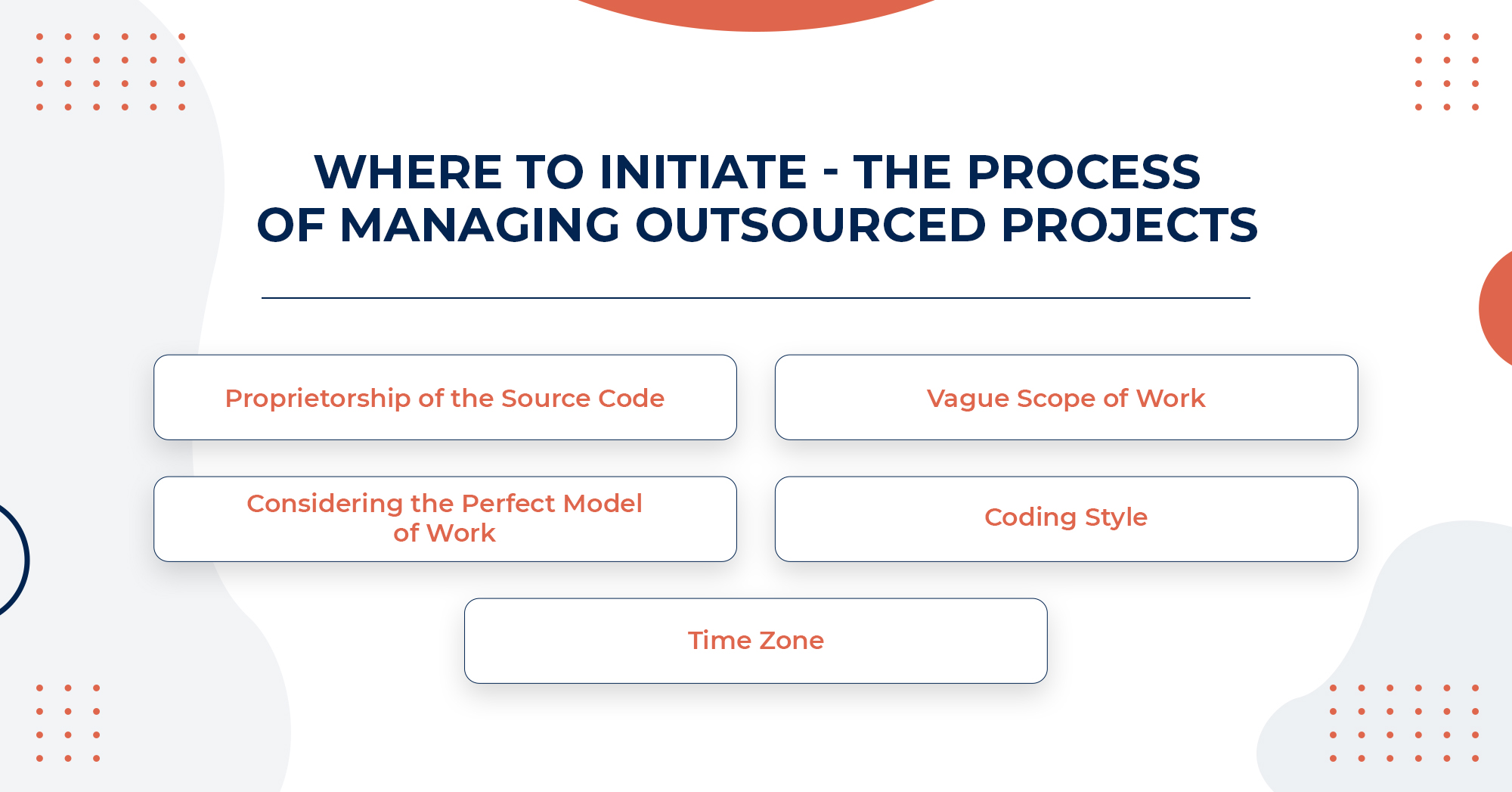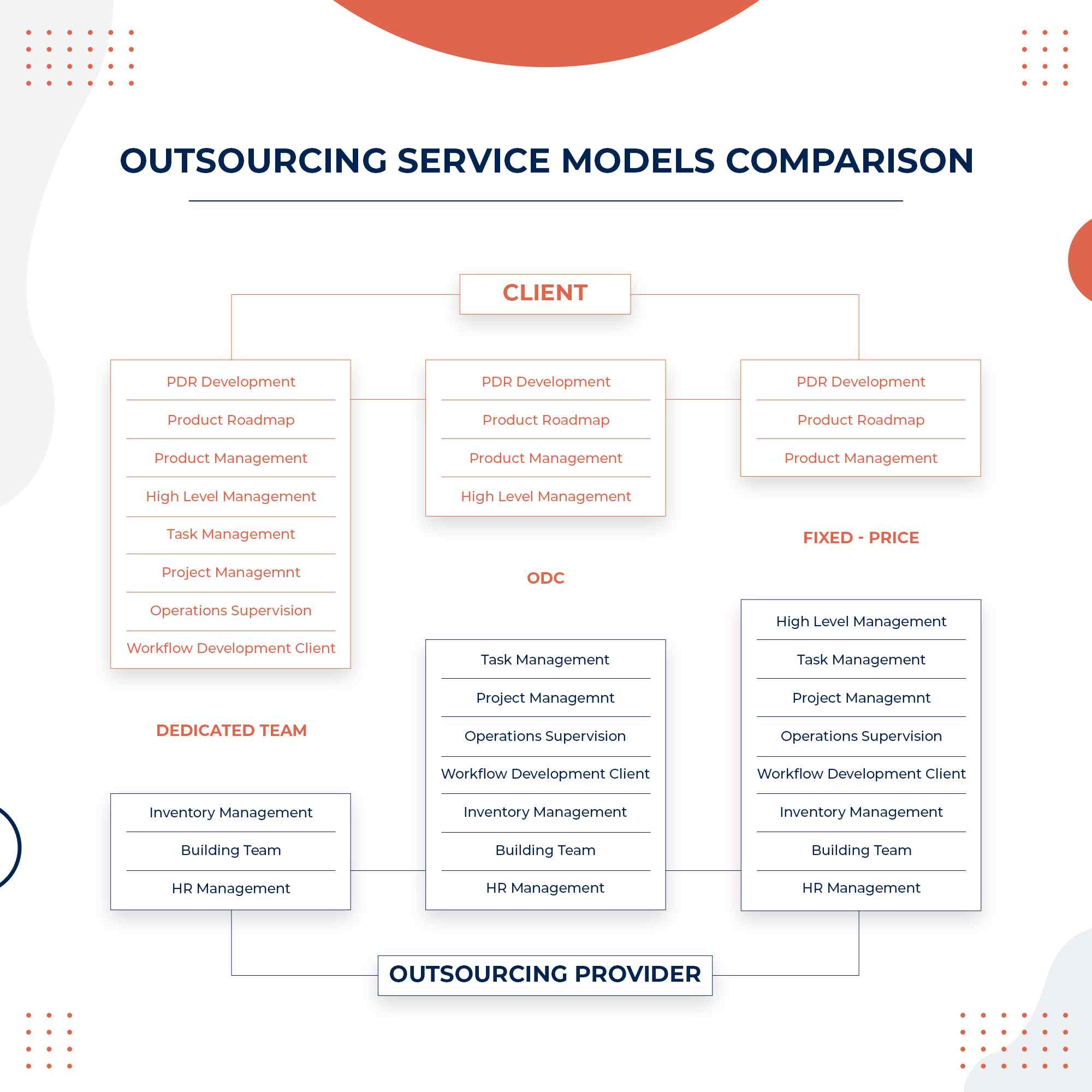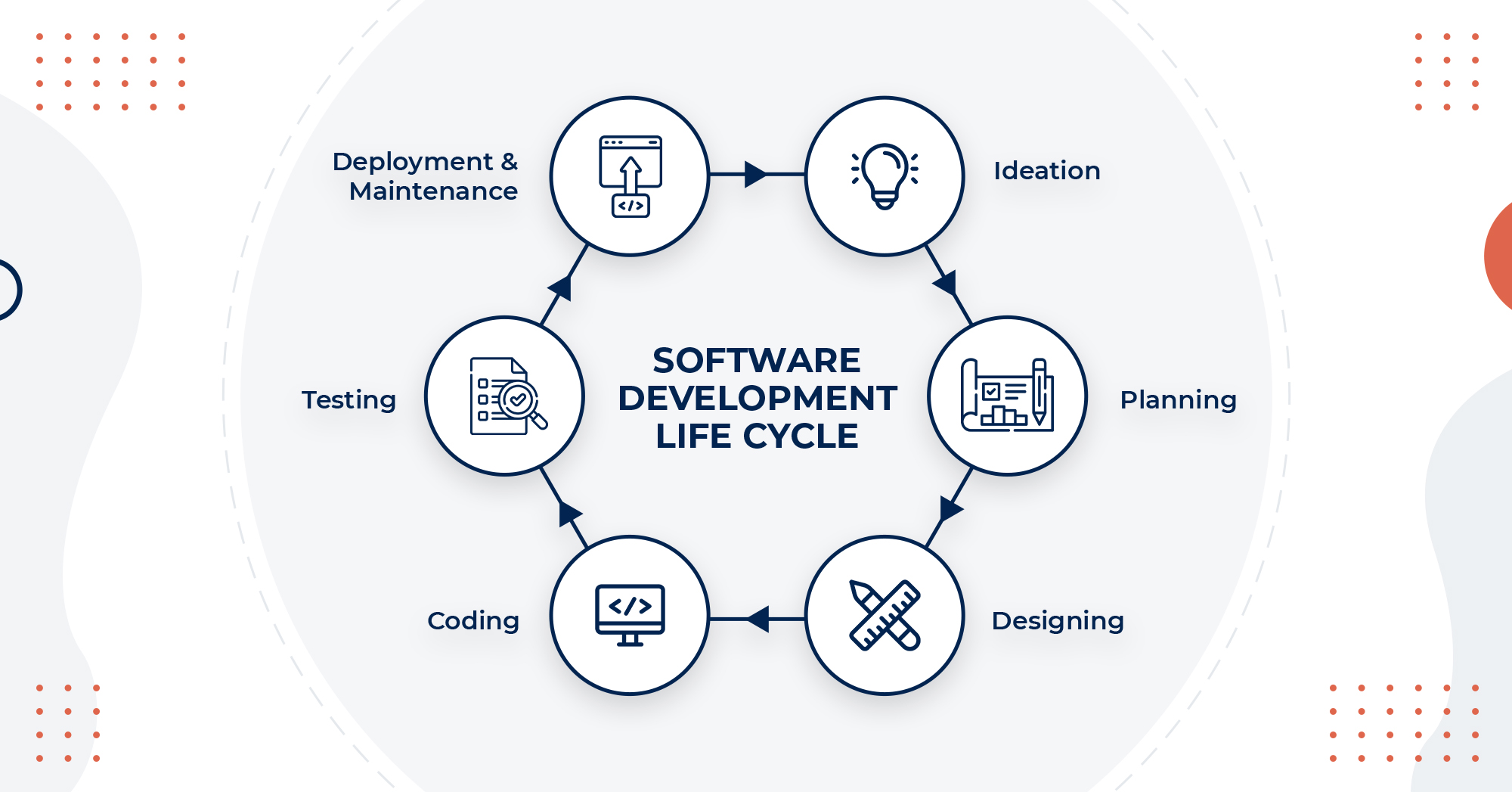Table of Contents
Outsourcing is the activity of hiring an external agency for the completion of software projects instead of using the services of in-house developers. It is quite common practice in approximately every industry to attain quality output regarding software projects.
An outsourced development team is a considerable standard in the evolving software world. It helps multiple startups to decrease the initial investment costs. In-house developers can also work efficiently due to outsourcing. it can also be a reason for the reduction in development costs. Moreover, Sometimes it is difficult to manage the outsourced teams.
Why do we need outsourcing for startups?
Outsourcing is more cost-effective and faster than in-house development. Let us discuss some reasons to outsource developers.
- It provides the access to more experienced developers with deep knowledge.
- You can also find out the technical experts throughout the world.
- It also provides an optimal balance between rates and skill.
- Easy scalability is another reason for outsourcing.
- Improved communication among development and operation teams.
According to Deloitte. global shared services and outsourcing survey report 2021, more than 50% of organizations achieved their project completion goals. Among them, approx. 65% of successful software organizations hired outsourcers in their delivery model while 35% in-house.
Where to initiate- The process of managing outsourced projects
Suggesting a plan is the first step to consider while initiating the process of managing the outsourced projects. The sudden rise in the IT sourcing industry shows its importance in this modern era. Outsourced development plays a crucial role in offering a lot of advantages to companies. The time to market a product is decreased in this manner. Moreover, it also improves efficiency and reduces costs without any problem. Companies can enjoy all these advantages by suggesting an innovative plan. The companies have to face IP leakage problems if planning is missing.
We must consider five major consequences regarding outsourcing development teams:
-
Proprietorship of the source code:
It can be noted as one of the most crucial pitfalls. It can be a reason for losing the proprietorship of your product. We must be focused while defining the clauses of the contract. The process regarding the provision of source code by the developers should be defined properly.
-
Vague scope of work:
The scope of work should also be explained properly. All the specifications should be documented for attaining quality output. The budget must also be included in the document. Every single aspect like OS versions, device firmware, etc. should also be defined.
-
Considering the perfect model of work:
It is another notable factor regarding software development. The project’s budget and deadline should also be defined properly along with the scope of work. Time and material models must be defined. The time model plays a key role in the timely completion of projects. The budget can be controlled by giving optimistic and pessimistic scenarios.
-
Coding style:
This aspect is related to the companies that are using both outsourcing and in-house development. You must ask for a sample code before hiring the outsource development team. Then you must review it and make the decisions accordingly.
-
Time zone:
It also plays a considerable role regarding outsourcing. You can face issues like time loss or ineffective operations if you have inadequate overlap time. Thus we must consider the time to outsource the dedicated team. It can surely be a helpful aspect for developers.
Challenges faced in the process of outsourced project management:
Teams working on outsourced project management may face some challenges during the application development process. We are going to elaborate on some of them. These challenges are as follows:
-
- Reduced Codebase Information
- Complex review procedure
- Inadequate training regarding Version Control
- IP security
-
Reduced Codebase Information:
The new developers are not aware of all the details of the codebase. It takes a lot of time for them to understand the whole Codebase completely. The development processes should be documented to avoid any kind of inconvenience. Businesses can avoid costly delays in this manner. The information regarding the processes of the project is kept updated in this way.
-
Complex review procedure:
All the modifications made by the team need to be tested and checked properly. The codebase should be broader and it must involve in-house alterations. The review procedures are quite helpful for improving the performance of the development team. Time management is also crucial in this regard. The improved quality codes can be easily maintained. The review procedure must be automated to avoid any kind of issue. You can also introduce a quality assurance procedure to improve the quality of the code.
-
Inadequate training regarding Version Control:
One version control system (Git) is used for the training of the team. However, the larger projects are not successful with Git. A new control version system is required for this purpose. Multiple version control systems are used for the proper training of the team members. You should be familiar with the right tools and procedures. You can use scripts to get all the codes together. The scope of the project should be clear before starting the coding process.
-
IP security:
There is always a risk of revealing business secrets while outsourcing a development team. You cannot restrict the access of the outsourced team by depending on your version control system. You can break up your project for better performance. It helps to limit the access that is quite helpful for the team. The access of the outsourced team can also be restricted by having a distinct repo. You must also figure out how the code should be developed and the process of updating the code should also be managed properly in this regard.
Look to Hire the Development Team?
Share the details of your request and we will provide you with a full-cycle team under one roof.
How to deal with the challenges regarding outsourcing:
One can deal with all the aforementioned challenges by maintaining proper and précised documentation. Communication plays a key role in this concern. The collaboration among the in-house and outsourced teams can be a solution to various project-related issues.
Lack of communication can be problematic for developers in delivering better output. Thus, there must be strong communication among team members for working efficiently. A version control system is another beneficial thing in this regard.
In conclusion, this system helps to manage the crucial aspects of the project in a better way. Things can be managed securely in this way.
Models regarding software development outsourcing:
The software development outsourcing process is not just about paying a third party to take help for the completion of your software project. Instead, the process starts with the section of the appropriate outsourcing model. Let us discuss three main options regarding it.
-
Time and material:
This model is a perfect option for small and medium projects with no predefined requirements. You can utilize this model for projects that require only one to three resources. In projects that are using the T&M model, the customers pay money for the time spent on the process of development.
-
Fixed price:
In this model, everything is predefined. Both the parties sign the agreement in advance regarding specifications of the project, price, and the project scope. It is a perfect choice for small projects.
-
Dedicated team:
A dedicated team model is suitable for long-term projects. In this model, the client pays the fixed amount as a split payment transaction to the hired team. You can utilize this model for a large in-house project when the company is lacking specific expertise regarding any project. Anyhow, Let’s begin a project with us at Esketchers, Hire a dedicated team that fits your needs.
The main characteristics of these three models regarding software development outsourcing are as follows:
| Features | T&M | Fixed-price | Dedicated team |
| Price type | Hourly wage | A fixed price for a complete project | Monthly fixed salary |
| Resources | Not clear | Defined clearly | Estimated |
| Requirements | Not clear | Defined clearly | Estimated |
| Size of project | Small and medium projects | Suitable for small projects | Large and long term projects |
| Scope | Not clear | Defined clearing | Estimated |
Setup the outsourcing strategy:
Improved quality of the project and increased productivity are some of the advantages of outsourcing teams. You can set up an effective outsourcing strategy by following the below-mentioned steps:
-
Define your goals:
You must define your goals and objectives while setting up the strategy. It helps to outsource a dedicated development team. Project completion can become easier in this way.
-
Defining the tasks:
You must define the tasks that you want to outsource. Tasks relevant to the software projects should also be defined properly to hire an efficient team.
-
Defining the project requirements:
The resources that are needed for the completion of the project must be defined to hire an outsourced development team. It helps to select an efficient outsourced development for your software projects.
-
Maintaining a good job environment:
We must also try to establish a friendly environment among the in-house staff and outsourced team. It helps all the team members to work effectively. It also results in improving the working ability of the employees.
Software Development Life Cycle:
The software project should be flexible and upgradable. Additionally, it must be easy to maintain. We must follow the steps of the SDLC model to develop the project appropriately. This model varies from project to project. Let us discuss the phases of the SDLC model:
-
Define the project scope:
The project starts with generating the idea. This immature stage includes multiple tasks,
-
- Feasible study to figure out the risk and the possibility of effective project completion.
- Defining the scope of the project.
- Identifying the expected results of the project.
- Recognizing stakeholders.
- Making the business case that delivers the validation for undertaking the software project.
- Making the statement of work that defines the objectives, deliverables, and scope of the project.
-
Planning stage
The second step in SDLC is planning. It includes:
-
- Create a plan regarding the project.
- Making the team.
- Identify the role of each team member.
- Deliver the required resources.
- Forestalling risks.
-
Design stage:
It is another crucial phase regarding software development. It involves
-
- The architecture of the project.
- User interface: UI/UX.
- Determining the platform on which the project will run e.g. Android, iOS, etc.
- Security and communication.
It may also contain the prototype regarding the project. This prototype is the visual representation of the project’s design and functionality.
-
Development or Coding stage
Coding is the backbone of your software project. It is a process of converting the design into an actual software solution. The main goal of this phase is to deliver the working software that meets all the requirements of the project and also the document related to the source code.
-
Testing and Integration stage
After the completion of the development phase, software quality assurance experts debug or test whether the alpha version of the software product is meeting the requirements or not. There is a complete phase of testing to ensure the quality of a product.
- Functional testing: It includes the testing of project functionality according to the user’s requirements.
- Unit testing: The process of testing each module of software and ensuring whether it’s working properly or not.
- Security testing: Security is one of the major concerns. QA experts should test that there must not be any risk or security threat in a project.
- Usability testing: It is used to test whether the software is intuitive or not.
- Performance testing: This type of testing checks the performance of a product under a heavy workload.
-
Deployment and maintenance
After the completion of testing then the project is delivered to the market for the process of beta testing. The product is also updated on regular basis for better and improved performance.
Details of the contract regarding software development outsourcing:
After finding the vendor of your choice then it is time to sign the agreement. This software development agreement also contains general terms, dispute resolution, termination conditions, etc. just like the contract relevant to any other service. Let us discuss some key sections regarding IT outsourcing that must be part of the contract:
-
The Services:
This section contains the description of all the services and the project scope that must be delivered by the outsourced candidate. The process for changing the scope of the project should also be described.
-
Project time and cost:
This part must specify the development phases and milestones with their deadlines, hourly rates, and schedule regarding payments, responsibility for delays, and other relevant information.
-
Acceptance testing:
It is the process of testing whether the requirements regarding projects are met or not.
-
Intellectual property rights:
The end-product does not belong to the developer instead, it is the client’s property. The contract must have the proper statement regarding it.
-
Confidentiality:
This part specifies which information should remain confidential. This section also describes the ramifications of information disclosure and also the responsibility of the outsourced developer regarding it.
How to select a software development vendor:
It is quite difficult to select the perfect vendor regarding outsourcing. But we can find an appropriate choice in this concern by following some simple steps. Let us discuss these steps.
- Identify your requirements.
- Find out the candidates according to your requirements.
- Check their profiles and customer reviews.
- Check the candidates’ rates, certifications, and expertise.
- Then access the clients of shortlisted vendors and ask for the required references.
- Discuss the requirements of projects with selected candidates.
- Then check the expertise of the candidate through a test assignment. Try your best to pay for that test assignment whether the result is according to your demand or not.
Wapping up:
Outsourcing is a cost-effective way of developing software solutions. There is also a possibility of facing risks and challenges regarding outsourcing as discussed above. You can also deal with the above-mentioned challenges regarding outsourced development teams by following specified tactics. A bunch of information is also discussed which may help in contracts regarding software development outsourcing.
Frequently Asked Questions:
[sp_easyaccordion id=”18116″]



